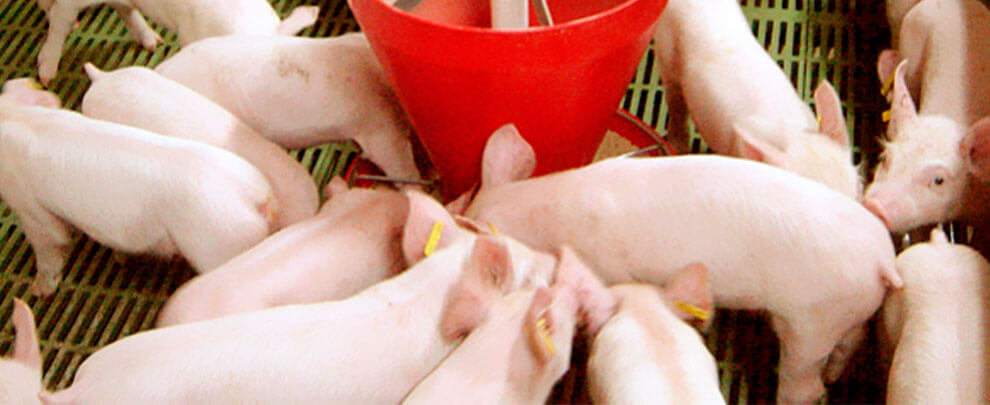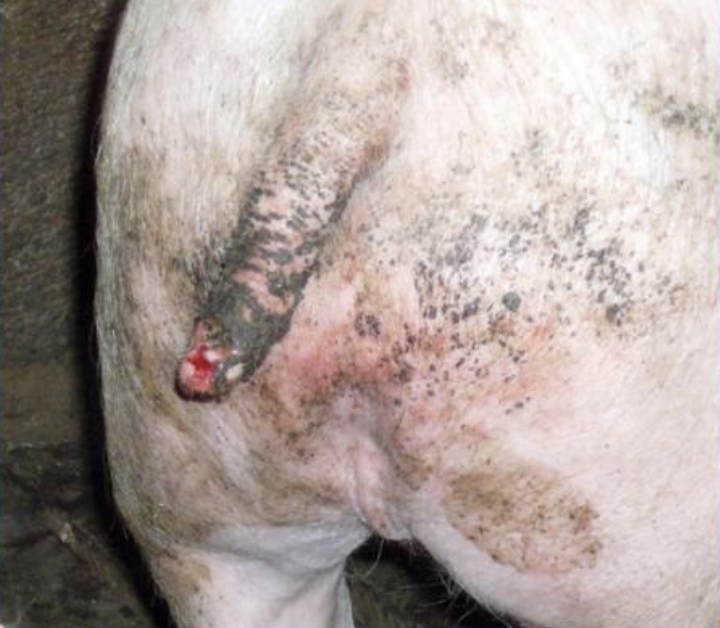Blog
Blog

How to avoid abnormal behavior in pigs
29 of May of 20 - Studies
Josep Rius. Rotecna’s Technical Department
When animals are in an environment that is not entirely satisfactory to their welfare, they often exhibit behaviors that can be considered abnormal in a way, since they do not appear when the animals are in an optimal environment. This behavior is usually associated with the so-called redirected exploratory behaviors and appears when the animals are in an environment in which they lack a certain stimulus necessary to carry out a behavior according to their nature.
In the wild pigs spend a lot of time exploring their surroundings, foraging for food. For the pig it is important to manifest this behavior, since the instinct to dig is so strong that it always has that need, wherever it is. If this exploration behavior cannot be carried out, it can be redirected to an alternative stimulus such as the tails of other pen mates (tail biting) or to any type of material within reach, such as hoppers.

Tail bite. Photo: UAB.
It is difficult to make a diagnosis without being able to directly observe the behavior of the animals or the environmental and management conditions in which they are, but we can review the main reasons that can cause this type of behavior:
- Adverse environmental conditions that negatively influence well-being, such as excess light or noise, temperature, humidity and ventilation (high or inadequate densities and poor ventilation are frequently a cause of stress and, consequently, of increased general activity).
- Incorrect management of feeding. The animals / feeding place ratio has a big effect on the behavior of pigs. In principle, the ad libitum feeders should guarantee that all the animals housed in the pen can eat as much as they want without any kind of restriction. Any restriction (either by reducing the feed flow too much, by an obstruction in the mechanism, by not offering feed 24 hours a day or by making a too long fasting before slaughter) can cause discomfort.
- The form of presentation of the feed (mash or pellets, dry or wet) determines the time of occupation in the feeder (greater in the cases of mash or dry feed, as feed intake is slower). The number of pigs per feeder must be adapted to the presentation of the food, since, if the occupation time is high, it can harm feeding behavior and, in some cases, well-being, thus preventing adequate daytime food activity.
- Access to drinking water: pigs must have permanent access to quantity and fresh water.
- Social component: excessive mixing of animals and high densities.
- Access to the feeder: it must be located in a place that allows good access for the pigs, so that there is enough space on both sides of the feeding place.
- Genetics: some genetic lines may be more sensitive to stress and to certain exciting situations. Certain genetic crosses can designate the level of aggressiveness or voracity of the animals and their behavior when facing access to food. In individual feeders with ad libitum feeding, restrictions should never occur due to lack of feed, because the response of pigs to this type of situation is usually very negative. Animals become more aggressive and violent in the face of the discomfort caused by hunger, and they tend to direct these behaviors towards an alternative stimulus such as the tails, ears or sides of their companions, or they break everything within their reach. This behavior does not help them satisfy hunger, but it does calm their mood.
- Absence of stimuli: almost all the studies on the relationship between tail biting and the presence of materials that allow exploratory behaviors conclude that the contribution of these materials reduces the probability of an outbreak of tail biting by 10 to 12 times.
- Nutrition: inadequate nutrition, with deficiencies of some mineral or fiber, may not satisfy the nutritional needs of the animals and favor their nervousness. The texture and particle size of the food can also be cause for restlessness or excitement.
Recommendations:
To avoid these redirected behaviors in pigs, we can apply the following recommendations:
1. Review all these points and observe the behavior of the animals to identify the reason for this behavior.
2. Add some type of enrichment material in the pens to try to redirect the animals' attention to another point.
3. Never leave the feeders empty, except when you have to fast the pigs before slaughter.
4. Check the feeders fuctioning every day and check that the amount of feed and the flow of water are adequate.
5. Bear in mind that not all pigs behave the same way in certain situations. Each genetics has its particularities and knowing them helps the farmer to offer his pigs a suitable environment.
6. Isolate animals with serious injuries or that start to bleed, and also those that bite or show more nervous or intense behavior.






